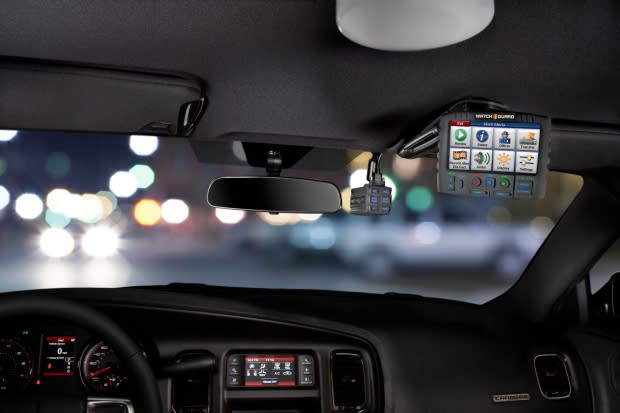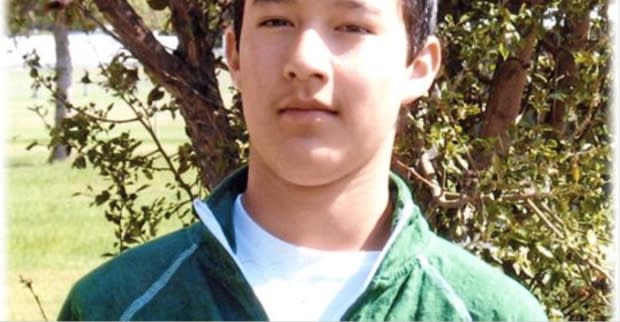More than 70% of general duty Sask. RCMP cars now have HD cameras to film on-road interactions
Nearly three-quarters of RCMP general duty vehicles in Saskatchewan are now equipped with HD cameras meant to capture officers' on-road interactions with the public.
As of this month, "the system is operational in approximately 60 of our detachments," said Cpl. Rob King, a spokesperson for the RCMP.
"Seventy-one per cent of general-duty RCMP vehicles in Saskatchewan have the equipment activated and operational."
CBC News asked about the in-car cameras after details of the system were disclosed last week during a coroner's inquest into the death of Brydon Whitstone.
Whitstone, a 22-year-old man from Onion Lake Cree Nation, was shot by an RCMP officer in North Battleford, Sask., on Oct. 21, 2017. Whitstone had led officers on a high-speed chase, during which the car he was driving collided with two marked RCMP vehicles.
Whitstone refused repeated orders to exit his car, officers testified. Const. Jerry Abbott said he thought Whitstone was reaching for a gun and yelled as much to other officers, despite never seeing a gun. He fired twice at Whitstone's chest, killing him.
One camera used by the RCMP captured part of the altercation, before the shooting, from about a block away.

Testimony during the inquest provided details about how the camera system, manufactured by the American company WatchGuard, works.
"If I'm driving home today and I get pulled over for speeding or an accident, do the RCMP have a camera on me? At Battlefords today?" asked Tim Hawryluk, a lawyer for the Saskatchewan Coroners Service.
"Yes," said the RCMP's Jeff Soroka, the man who monitored the RCMP's WatchGuard cameras on Oct. 21, 2017, when Whitstone was shot.
The cameras are being rolled out elsewhere in Saskatchewan, Soroka added. The RCMP is "mandated" to have the cameras, he added.
$20M standing offer with WatchGuard
"The systems enhance police and public safety, strengthen accountability, and collect evidence of … offences to support policing activities and investigations," said King.
It's not a new practice — the RCMP has used in-car cameras since the 1990s, he said. But switching to WatchGuard meant the ability to capture footage in high definition.
According to WatchGuard's website, the company's standing offer with the RCMP "is the largest ever awarded to WatchGuard for digital in-car video."
The option is for "three years, plus two option years, for a total estimated value of $20.34 million," the Texas-based company added.
On the night Whitstone died, three of the Battlefords detachment's 18 vehicles were equipped with the cameras, including two that responded to the Whitstone scene.
"It was in its infancy," Soroka said of the program, adding that the cameras were also being introduced in Prince Albert.
Today, 18 vehicles at the Battlefords detachment have cameras, Soroka said.
"There appears to have been a loophole in the [sense] that the system was not rolled out then," said Hawryluk.
Only 1 piece of police footage
A lack of experience with the new camera system accounted for why there was only one piece of police footage of the Whitstone altercation, even though two RCMP cars were equipped to record that night, the inquest jury heard.
Const. Matthew McKay was the RCMP officer who first pursued Whitstone. His WatchGuard camera captured Whitstone's car as it drove through the streets of North Battleford and ultimately collided with a marked RCMP vehicle.
The video played during the inquest showed McKay's car resting about a block away from the intersection where the shooting took place. McKay turned his car off and went on foot to the intersection where Whitstone's car was eventually surrounded by officers.
McKay testified that a microphone can be clipped to an officer's uniform if he has to leave his car to pursue a suspect on foot.
McKay did not clip his microphone that night, he said.
"I was trying to preserve my life and the lives of the public. There was no time to stop and grab it," he said.

Had McKay done so and not completely shut off his car, his car camera would have recording when the shooting occurred, said Mark Ebert, a Whitstone family lawyer.
Instead, the camera stopped recording about two minutes after McKay shut off his car, Ebert said.
McKay has undergone WatchGuard training since the Whitstone incident, the officer said.
Hard drive was full
The other officer with a camera that night, Const. Garret Dove — the officer whose car was hit by Whitstone — said he too is now trained in how to use the WatchGuard system.
Dove's car was sent across a street over the sidewalk, resting partly on a fence. The car's front end faced away from the Whitstone shooting.
Dove's camera hard drive was full and was not recording during the Whitstone pursuit and altercation.
WatchGuard hard drives can hold up to 64 gigabytes of footage, said Soroka. That's roughly equivalent to 17 high-definition feature-length movies downloaded from iTunes.
The cameras have lights to warn officers that their hard drive is full, Soroka said.
Officers can download their hard drive's contents onto a USB stick in order to clear their hard drive and start recording again, Soroka said.
Dove said he had not been trained in how to do that.

